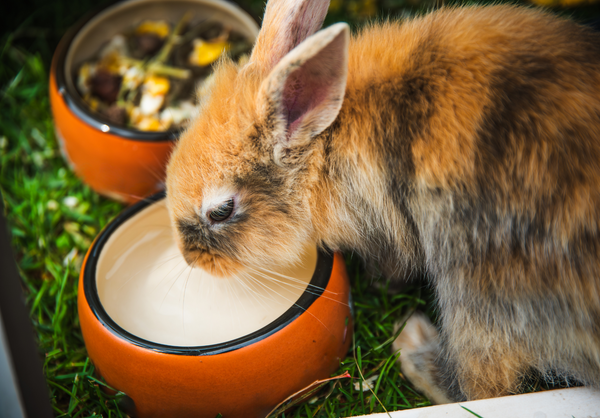Introduction
Are you thinking about adopting a cat? Adopting a cat can be an incredibly fulfilling experience, but with so many kitties waiting for homes, how do you choose the right one? This blog post is designed to guide you through the process of selecting the perfect feline friend. You'll learn about how to get an idea of the cat's temperament, age considerations, and practical tips for your adoption journey. By the end, you'll feel confident in making an informed decision that benefits both you and your new pet.
Personality Matters
Assessing Temperament
Spend time interacting with potential adoptees to gauge their temperament. Some cats are playful and energetic, while others are calm and reserved. Choose a cat whose personality matches your own and your household's energy level. It would be a good idea that the whole family visits as each person in the household has different energy a cat can be receptive of.
Socialization
Ask our staff or the rescue organization about the cat’s history and social experiences. It could help you figure out if he or she would fit in well with your home setup.
Special Needs Cats
Don’t overlook cats with special needs. These cats can be incredibly loving and rewarding to adopt. Whether they have a medical condition, are older, or have a disability, they deserve a chance at a happy life. Ensure you’re prepared for any extra care they might require.
Age Considerations
Kittens vs. Adult Cats
Kittens are adorable and playful, but they require a lot of time, patience, and training. Adult cats are often calmer, their personalities are more established and easier to read and they may have better house manners, including litter box use. They can be a great option for first-time cat owners or those who prefer a more settled pet.
Senior Cats
Senior cats can make wonderful companions. They are usually calmer, and their personalities are well-established, so you know what you’re getting. Plus, adopting a senior cat can be incredibly rewarding.
Energy Levels
Consider the energy levels of different age groups. Kittens have boundless energy and need lots of playtime and stimulation. Adult cats vary in energy levels, so it's important to choose one that matches your lifestyle. Older cats are generally more relaxed and require less active play.
Preparing Your Home
Safe Spaces
Create a safe and comfortable space for your new cat to adjust to their new home. This can be a quiet room with their essentials like a litter box, food, water, toys and a cozy bed. This is important to do if you have other pets in the household or not. Gradually introduce them to the rest of the house over the span of a few weeks, and be sure to show them where their litter box or boxes will be permanently.
Essential Supplies
Gather all necessary supplies before bringing your cat home. This includes food and water dishes, high-quality cat food, a litter box and litter, scratching posts, toys, and grooming tools. Having everything ready will make the transition smoother for both you and your cat.
Bowls
ZippyPaws Happy Bowl Slow Feeder Donut
Van Ness Ecoware Non-Skid Double Diner
Litter box and litter
For kittens 6 months and under a non clumping pellet litter like Cat it Daily Scoop is best. For cats older than 6 months a low dust all natural litter is best. Litter is a personal preference for both cats and humans alike. Traditional clumping high quality clay litter is still a popular choice but there are many other options available today that are better for the environment and the cats and humans that handle the litter.
Omega Paw Roll'n Clean Litter Box - Regular
Toys
Different types of toys to have: a wand toy for interactive hunting and play time with you, enrichment toys that offer places to hide treats, parts that pull apart or require some problem solving (these aren't just for dogs!), light up toys for night time play, and varying textures and shapes of self play toys.
Cat Stages Rainy Day Puzzle & Play
Zippy Claws Burrow Fish in Bowl
Catit Senses Circuit and Catit Pixi Spinner
Introducing Other Pets
If you have other pets, introduce them slowly and carefully. Keep the new cat separate initially and allow them to get used to each other's scents before face-to-face meetings. First step is scent swapping, the second step is space swapping and lastly a supervised interaction. Each step can only be taken after the first one was successful several times, this could take anywhere from a week to several weeks. Supervise interactions until you are confident they can coexist peacefully.
Building a Bond
Quality Time
Spend quality time with your new cat to build trust and a strong bond. Play with them, pet them, and talk to them. Look into reading your cat's body language, as they communicate so much with facial expressions and even tail movements. Being familiar with cat body language and knowing how to express your own body language your cat will recognize helps establish trust, especially with shy cats. Be patient; some cats take longer to warm up to new people and environments than others.
Consistency and Routine
Cats thrive on consistency and routine. Feed them at the same times each day, keep their litter box clean, and maintain a consistent schedule for play and rest. This helps them feel secure and comfortable in their new home.
Positive Reinforcement
Use positive reinforcement to encourage good behavior. Praise and reward your cat with treats or affection when they use the litter box, scratch the appropriate surfaces, or come to you when called. This strengthens your bond and helps them learn what is expected.
Enrichment and Stimulation
Interactive Toys
Provide a variety of interactive toys to keep your cat mentally and physically stimulated. Puzzle feeders, wand toys, and laser pointers can keep them engaged and prevent boredom.
Doc & Phoebe's Indoor Hunting Feeder
Go Cat - Da Bird Pull Apart Wand
Scratching Posts
Scratching is a natural behavior for cats. Provide multiple scratching posts or pads around the house to prevent them from scratching furniture. Encourage their use by placing them in prominent locations and using catnip to attract them.
I would suggest a really big one. The taller the better. Not all scratchers need to be tall but one should be.
Climbing and Hiding Spots
Cats love to climb and hide. Provide cat trees, shelves, and cozy hideaways to satisfy these instincts. This also gives them a sense of security and territory within your home.
Feeding and Nutrition
High-Quality Food
Choose a high-quality cat food that meets their nutritional needs. All cats should be fed a combination of dry food and wet food. Cats tend to be chronically dehydrated so being offered a food with a high moisture content is critical for urinary health. Consult with your vet to determine the best diet based on your cat's age, health, and activity level.
Now Fresh grain free cat food in both wet and dry
Feeding Schedule
Establish a regular feeding schedule to maintain their health and well-being. Most cats do well with two meals a day, but some prefer smaller, more frequent meals. Monitor their weight and adjust portions as needed.
Hydration
Ensure your cat has access to fresh water at all times. Some cats prefer running water, so consider investing in a cat water fountain to encourage them to drink more.
Catit Flower Fountain 2.0 - 3L
Raindrop Drinking Fountain Plastic
Grooming and Hygiene
Regular Grooming
Regular grooming keeps your cat's coat healthy and reduces shedding. Brush them regularly, especially if they have long fur. This also helps prevent hairballs and matting.
Baxter & Bella Pin & Bristle Cat Brush
Dental Care
Dental health is crucial for cats. Brush their teeth regularly with a cat-friendly toothbrush and toothpaste. Dental treats and toys can also help reduce plaque and tartar buildup.
Tropiclean Fresh Breath Brushing Kit
Litter Box Maintenance
Keep the litter box clean to encourage use and prevent behavioral issues. Scoop it daily and change the litter regularly. Place the litter box in a quiet, accessible location. The rule of thumb is one litter box per cat plus one more box.
Peter's Odour Eliminating Crystals
Peter's Litter Mat
Training and Behavior
Litter Training
Most cats are naturally inclined to use a litter box, but some may need guidance. Place them in the litter box after meals and naps, and praise them when they use it. If accidents occur, clean them thoroughly to remove any scent.
Discouraging Bad Behavior
Discourage undesirable behaviors like scratching furniture or jumping on counters using positive reinforcement and consistent redirection. Provide alternatives, such as scratching posts and climbing shelves, and reward them for using them.
Cats do best when they live safely indoors. Outside play should be supervised on a harness or in a safe enclosed catio.
Understanding Body Language
Learn to read your cat's body language to understand their needs and emotions. Ears back, tail flicking, or hissing indicate stress or discomfort, while purring, kneading, and slow blinking show contentment and affection.
Read our post here on Cats and Their Quirky Habits!
Conclusion
Adopting a cat is a rewarding experience that brings joy and companionship. Remember, adopting a cat is a long-term commitment, but the love and happiness they bring are well worth it. Ready to start your adoption journey? Visit us in-store to meet our cats or visit https://www.catshome.org/adoptable-cats




